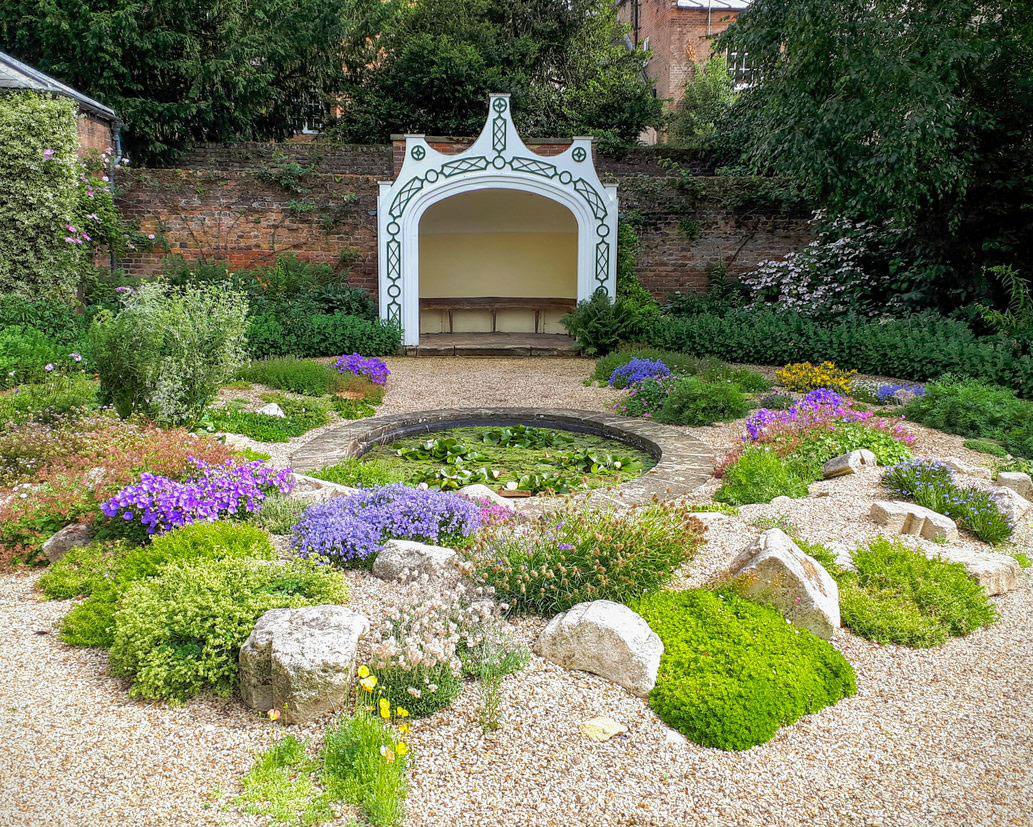How to build a rockery – a step-by-step guide
Discover how to build a rockery to bring an intriguing new feature to your backyard


Building a rockery – or rock garden, as they're also referred to – can give a flat garden structure, can make more of a sloping backyard, and can create a home for dry or Mediterranean-style gardens.
Rockeries are traditionally reserved for Alpine plants in Europe, but there really are no rules – your rockery can feature everything from traditional planting schemes to desert-loving, drought-tolerant succulents and cacti. The rock garden ideas – and the planting in particular – that you choose simply need to suit your zone's climate, and reflect the natural materials and stone found locally.
You can build a rockery yourself, and it's especially easy if you already have a sloped backyard. However, the slope, mound or hillock can be replicated with the delivery of extra soil and rocks. Here, we show you the basics of building a rockery, step by step.
How to build a rockery
To build a rockery, the basics that you will need include:
- Rubble – unused building rubble, such as old or damaged bricks will do.
- Landscape fabric to cover the rubble.
- Topsoil.
- Rocks of different sizes, from pea gravel to small, medium and large-sized rocks. You will need more than you think to create an effective display. Choose stone that reflects your local surroundings for the most natural look.
- Compost.
- Rockery plants.
1. Find the right site for your rockery
A rockery really can go anywhere in a backyard, but you do need to consider whether the conditions – shade, a south-facing spot, good or poor drainage, for instance – suit the planting that you have chosen for it. Planting that suits rock gardens includes traditional Alpine plants, which like lots of light, while desert plants, which also suit that dry garden approach, like good drainage, too.
Consider the surroundings of the site of your rockery, too – it needs to look as natural as possible to be convincing, though it will look more established over time.
2. Plan the rock garden's design
With the location of the rockery decided, you can begin to work on its shape and size. If you want it to look natural, you should work to an organic, irregular shape, though rockeries can be more formal, mimicking some of the design elements of Japanese gardens.
Design expertise in your inbox – from inspiring decorating ideas and beautiful celebrity homes to practical gardening advice and shopping round-ups.
A rockery is perfect for an entire front yard – it's a low-maintenance way to garden and will always look neat with minimum work. For backyard landscaping, the key is to ensure your rockery looks like a natural part of the garden, and sometimes the best way to do this is to run a low wall around it in a local stone where it borders a lawn, for example.
Similarly, gravel, stones and rocks that suit your backyard's local surroundings will make your rockery look as integrated as possible, as will planting that's suited to the local climate.
Your rockery design will be very organic, but as you go, you will need to have in mind where plants will go so that you can leave space for planting pockets.
3. Prepare the site
The first step to building a rockery is to clear all weeds from the site. That done, you can begin to build your rockery structure with the first layer of rubble. There do need to be some gaps between the rocks to ensure the rockery has good drainage, otherwise it will become a hardened mound. That said, these gaps need to be no more than a finger's width or the structure won't be sound.
Once you are happy with the basic shape and size of the rockery's foundation, cover it entirely with landscape fabric – to prevent weeds from growing in future – weighing the fabric with small stones at the edge of the rockery until you pile on the first layer of rocks.
4. Begin to position the rocks
Lay the largest rocks first so that they create a sloped, natural look. Ensure the directions they face are random and that there is no pattern your eye can establish as 'regular'.
Next, add slightly smaller rocks, using them to wedge the larger rocks into a stable position. Continue to add rocks of various sizes until you are ready to add gravel, leaving space for planting pockets.
Ensure the edges of the landscaping fabric is disguised by rocks, gravel or a retaining wall.
5. Add topsoil
Once the large, medium-sized and smaller rocks are in position, add a 4-5in layer of topsoil to the rockery to create planting pockets. The soil may need to be deeper in places to help bed in and stabilize some of the rocks, too.
6. Plan out the planting
With the majority of the rocks and planting pockets in place on the rockery, you start to position your plants in pots, stepping back regularly to check you are happy with the arrangement, plant heights and juxtapositions.
Once you are happy, loosen the planting pockets a little, half-filling them with suitable compost. If you are putting in plants that like free-draining conditions, you may like to add horticultural grit to the mix, too.
Firm the plants down into the compost, fill around them, water and allow them to establish. Hide the soil beneath the plants foliage or with a handful or two of gravel or small rocks.
When is the best time to build a rockery
The best time to build a rockery is January/February, when the weather has been wet but the soil isn't frozen solid. You can, however, build a rockery at any time of year, but you will want to ensure that the soil is easy to dig into and move about.
Does a rockery need soil?
A rockery does need soil – but the amount you need and the soil mix you choose will really depend on the conditions the plants you are putting in prefer. For example, traditional rockery plants like well-draining soil, so you will find that mixing compost with grit and sand will create ideal conditions. Since, however, you are creating individual planting pockets within a rockery, though, rather than tackling an entire border, you can create disparate soil conditions that each separate plant thrives in.

Melanie has worked in homes and gardens media for two decades. Having previously served as Editor on Period Living magazine, and worked on Homes & Gardens, Gardening Etc, Real Homes, and Homebuilding & Renovating, she is now focusing on her passion for gardening as a Senior Editor at Gardening Know How. As a keen home grower, Melanie has experimented with pretty much every type of vegetable at some point – with mixed results. Often it is the simplest things that elude you, which may explain why she just can't seem to master zucchinis.